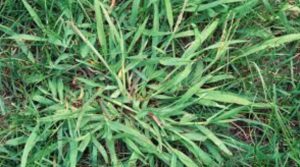What the heck are they, and why are they important?
Have you ever wondered why you’re told to apply crabgrass pre-emergent herbicide around the same time that the forsythias are in bloom? Is it an old wives’ tale, passed on through the generations that we just take for fact? Well, no. There is some tried and true science behind it, along with the reason horticulturists use specific timing to scout, treat, and proactively prevent the onset of many plant predators including both weeds and insects. The term used is called Growing Degree Days (GDD).
GDD’s help determine when certain flowers will bloom, when agronomic crops should be planted and when they will reach maturity, and when insects will reach certain instars in their life cycle. It is determined by adding a days high temperature with the low temperature, divided by 2 to get the average, then subtracting the temperature base which is set at 50 degrees. The equation is as follows:
GDD = (Tmax + Tmin) / 2 – Tbase
(This equation will hopefully please the math savvy folks who are impressed by complicated algebraic equations.)
For example, if the high temperature is 65 and the low temperature is 45…
(65 + 45) / 2 – 50 = 5 GDD
This number is added to the previous days GDD to achieve a cumulative running result.

For the example above, the normal cycle of forsythia’s to bloom is approximately 200 GDD. This is also close to the same number of GDD for crabgrass germination. Ding Ding Ding! Your old wife was right. But what she used was called a phenological indicator. These indicators are a physical event of one plant in the landscape telling you to be ready for another one to occur. Here are a couple more: Plant tomatoes when daylilies start to bloom. And grasshopper eggs hatch when purple Lilacs bloom. Now you know the real reason why these indicators are used, it’s based on growing degree days.




